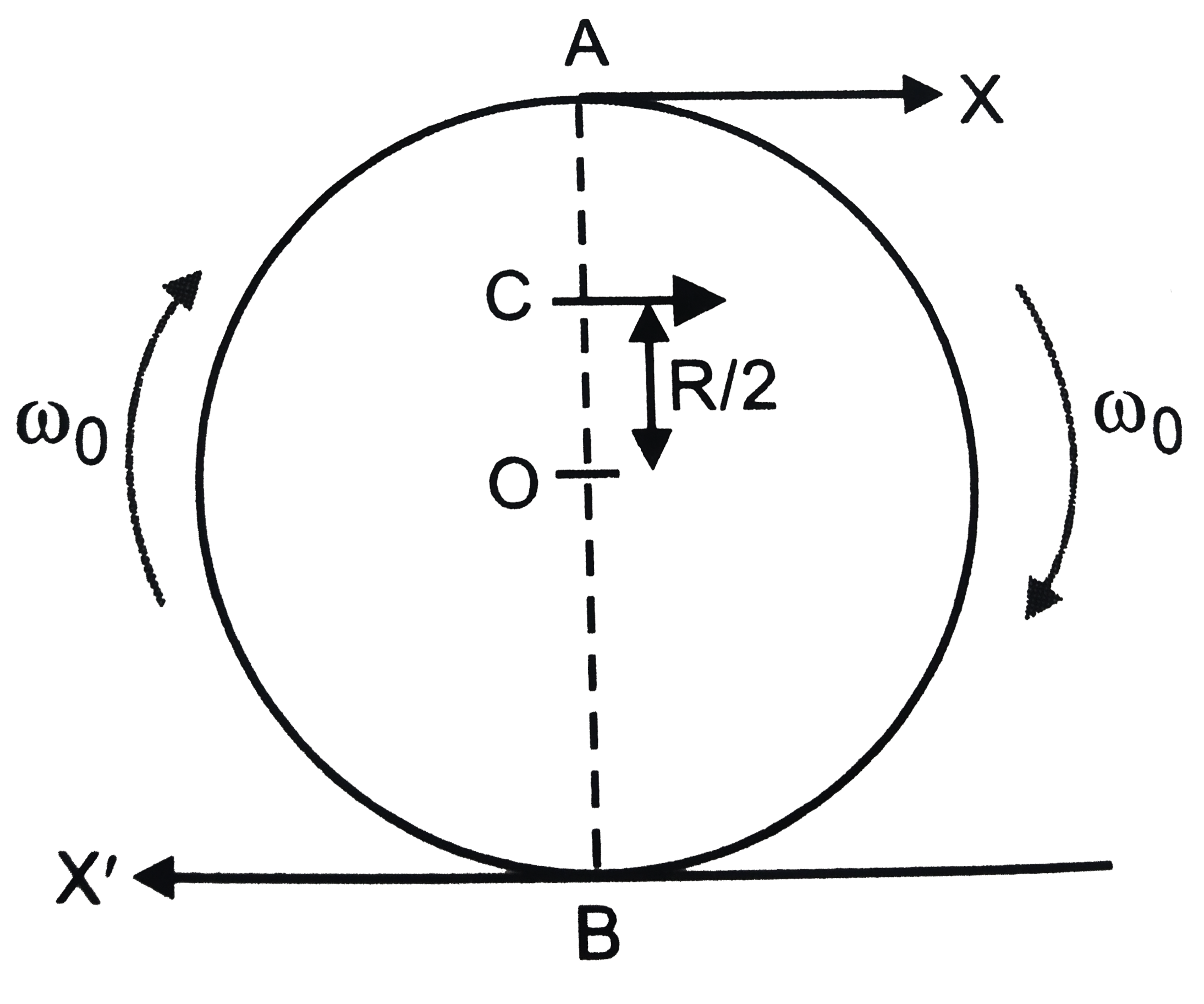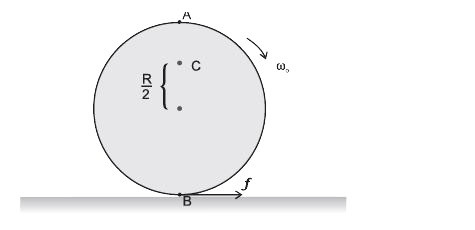A disc spinning about its axis is placed lightly without an translational push on a perfectly frictionless table.Will the cetre of mass of the disc advance?Solution in Punjabi
Step by step video & image solution for A disc spinning about its axis is placed lightly without an translational push on a perfectly frictionless table.Will the cetre of mass of the disc advance? by Physics experts to help you in doubts & scoring excellent marks in Class 11 exams.
Updated on:21/07/2023Topper's Solved these Questions
- MOTION OF SYSTEM OF PARTICLES AND RIGID BODYBOOK - JBD PUBLICATIONCHAPTER - MOTION OF SYSTEM OF PARTICLES AND RIGID BODYEXERCISE - EXAMPLE
100 Videos
- MODEL TEST PAPER-06BOOK - JBD PUBLICATIONCHAPTER - MODEL TEST PAPER-06EXERCISE - EXERCISE
37 Videos
- Oscillations and WavesBOOK - JBD PUBLICATIONCHAPTER - Oscillations and WavesEXERCISE - EXAMPLE
97 Videos
Similar Questions
A body is rotating, it is necessary being acted upon by an exteral torque?
View SolutionGive an example of a physical quantity which has neither unit nor dimensions.
View SolutionIs S.H.M. always linear?
View SolutionTwo thin discs, each of mass M and radius r metre, are attached as shown in figure, to form a rigid body about an axis perpendicular to the plane of disc B passing through its cetre is
View SolutionA disc roating about its axis with angular speed omega_(0) is placed lightly (without any translational pull) on a perfectly frictionless table. The radius of the disc is R . What are the linear velocities of the points A, B and C on the disc shown in Fig. Will the disc roll in the direction indicated ?
View SolutionA disc rotating about its axis with angular speed omega_0 is placed lightly (without any translational push) on a perfectly frictionless table. The radius of the disc is R . What are on the disc shown . Will the disc roll in the direction indicated?
View SolutionA brass disc is rotating about its axis. If temperature of disc is increased then its
View SolutionA disc is fnst spinned and then placed gentlyon a rough floor with its surface horizontal. Will centre of mass of disc advance in some direction ? Explain.
View SolutionA disc rotating about its axis with angular speed ω0 is placed lightly (without any translational pull) on a perfectly frictionless table. The radius of the disc is R. What are the linear velocities of the points A,BandC on the disc shown in Fig. Will the disc roll in the direction indicated ?

View SolutionA disc rotating about its axis with angular speed ωo is placed lightly (without any translational push) on a perfectly frictionless table. The radius of the disc is R. What are the linear velocities of the points A, B and C on the disc shown in Fig. 7.41? Will the disc roll in the direction indicated ?

View SolutionA disc rotating about its axis with angular speed ωo is placed lightly (without any translational push) on a perfectly frictionless table. The radius of the disc is R. What are the linear velocities of the points A, B and C on the disc shown in Fig. 7.41? Will the disc roll in the direction indicated ?

View SolutionA disc rotating about its axis with angular speed ω_(o) is placed lightly (without any translational push) on a perfectly frictionless table. The radius of the disc is R. What are the linear velocities of the points A, B and C on the disc shown in Fig. 7.41? Will the disc roll in the direction indicated ?
View SolutionA disc rotating about its axis with angular speed omega_(0) is placed lightly (without any translational pull) on a perfectly frictionless table. The radius of the disc is R . What are the linear velocities of the points A, B and C on the disc shown in Fig. Will the disc roll in the direction indicated ?
View SolutionA disc rotating about its axis with angular speed omega_(0) is placed lightly (without any translational pull) on a perfectly frictionless table. The radius of the disc is R . What are the linear velocities of the points A, B and C on the disc shown in Fig. Will the disc roll in the direction indicated ?
View SolutionA disc rotating about its axis with angular speed is placed lightly {without any transnational push) on a perfectly friction-less table. The radius of the disc is R. What are the linear velocities of the point A, B and C on the disc shown in the Fig. B 7:2.60 ? Will the disc roll in the direction indicated ?
View SolutionA disc rotating about its axis with angular speed omega_(0) is placed lightly (without any translational push) on a perfectly frictionless table. The radius of the disc is R. What are the linear velocities of the points A, B and C on the disc shown in fig. ? Will the disc roll in the direction indicated?
View Solution
